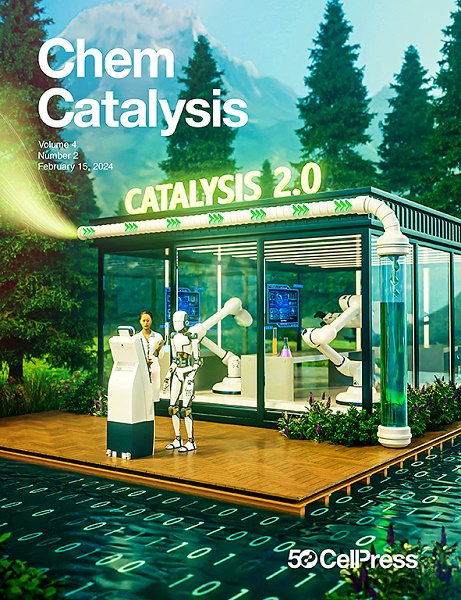Advances in integrated catalysts for CO2 thermal hydrogenation to multicarbon products
IF 11.5
Q1 CHEMISTRY, PHYSICAL
引用次数: 0
Abstract
Recently, there has been growing interest in using green hydrogen (H2) to convert CO2 into multicarbon products (C2+) directly. This review highlights recent advancements in integrated catalysts featuring multiple components and complementary properties designed for the one-step synthesis of C2+ products via CO2 hydrogenation. The discussion particularly focuses on how chemical compositions (metals, metal oxides, zeolites, etc.) and spatial arrangement (proximity) affect their catalytic performance. Additionally, it explores various integration methods (physical, chemical, and bio-template assembly methods) for combining multiple active sites to overcome selectivity limitations. The review covers four key types of multicarbon products: (1) light olefins, (2) gasoline (C5–C11) or diesel fuel (C10–C20), (3) aromatics, and (4) C2+ oxygenates. Finally, it outlines future research directions by identifying the challenges and opportunities in CO2 hydrogenation to C2+ products. This review aims to foster greater interest among both academic and industrial researchers in advancing CO2 hydrogenation technologies by using integrated nanocatalysts.

CO2热加氢制多碳产品一体化催化剂研究进展
近年来,人们对利用绿色氢(H2)直接将二氧化碳转化为多碳产品(C2+)的兴趣日益浓厚。本文综述了近年来在二氧化碳加氢一步法合成C2+产物的集成催化剂方面的研究进展。讨论特别集中在化学成分(金属,金属氧化物,沸石等)和空间排列(接近)如何影响它们的催化性能。此外,它还探索了多种整合方法(物理,化学和生物模板组装方法),用于组合多个活性位点以克服选择性限制。综述涵盖了四种主要类型的多碳产品:(1)轻烯烃,(2)汽油(C5-C11)或柴油(C10-C20),(3)芳烃,(4)C2+氧合物。最后,通过确定CO2加氢制C2+产品的挑战和机遇,概述了未来的研究方向。本综述旨在促进学术界和工业界研究人员对利用集成纳米催化剂推进二氧化碳加氢技术的更大兴趣。
本文章由计算机程序翻译,如有差异,请以英文原文为准。
求助全文
约1分钟内获得全文
求助全文
来源期刊
CiteScore
10.50
自引率
6.40%
发文量
0
期刊介绍:
Chem Catalysis is a monthly journal that publishes innovative research on fundamental and applied catalysis, providing a platform for researchers across chemistry, chemical engineering, and related fields. It serves as a premier resource for scientists and engineers in academia and industry, covering heterogeneous, homogeneous, and biocatalysis. Emphasizing transformative methods and technologies, the journal aims to advance understanding, introduce novel catalysts, and connect fundamental insights to real-world applications for societal benefit.

 求助内容:
求助内容: 应助结果提醒方式:
应助结果提醒方式:


